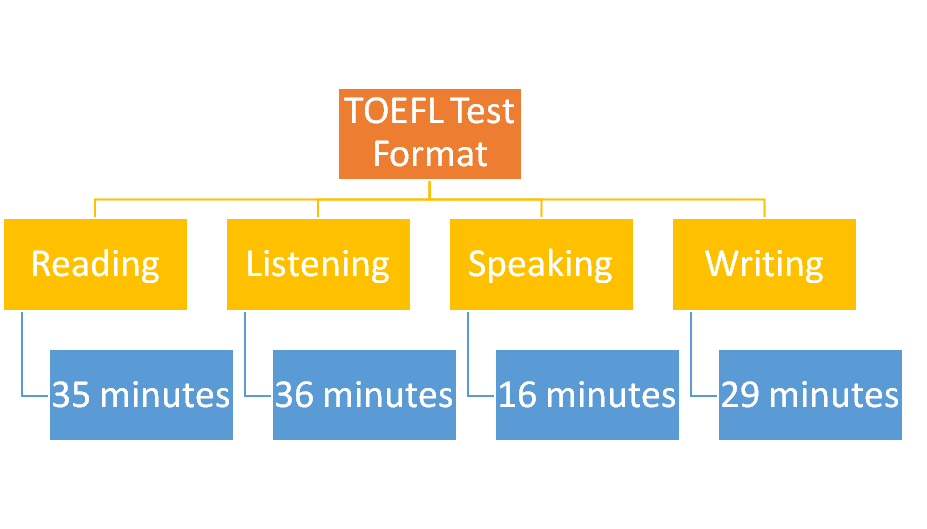Accepted by more than 12,500 institutions in around 160 countries, TOEFL is the English Language proficiency test that measures the English-speaking skills of non-native speakers.The Test of English as a Foreign Language (TOEFL) is often used as a requirement for admission in various colleges and universities along with work and immigration.
An Overview of TOEFL

It assesses how well you can read and understand materials used in an academic environment.
Question type: It includes 2 reading passages, each around 700 words that needs to be answered in 35 minutes. These texts include university level introductory topics.
It measures your ability to understand conversations and lectures in English.
It includes listening for - basic comprehension, understand the speaker’s attitude and degree of certainty, and connecting information. It includes
which needs to be answered in 36 minutes.
Question Type:
This section includes audios from native English speakers from North America, the U.K., New Zealand or Australia to offer a variety of accents.
It measures your ability to speak English effectively in academic settings. You will need 16 minutes to complete this section.
Question Type:
You need to respond in 45 or 60 seconds after a preparation time of 15-30seconds. Your answers will be recorded in the microphone.
It measures your ability to write in English in an academic setting, and to present your ideas in a clear, well-organized way.
You need to finish this section in 29 minutes.
Question Type:
The test is scored on a scale of 0 to 120 with each section scored between 0 to 30.
Interpretation of score:
The TOEFL score is valid for 2 years from the test date.